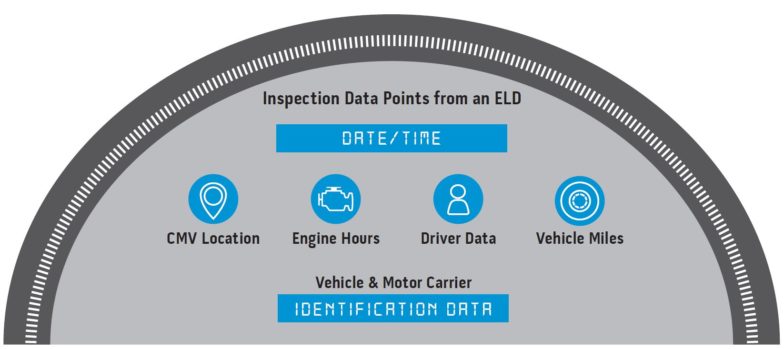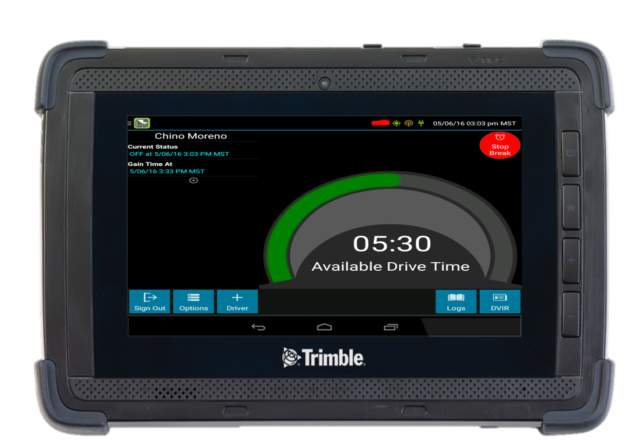
Jeffrey Van Grootel, director of product management for Trimble Construction Logistics, is a BuiltWorlds contributor.
 We invite experts and thought leaders to share their knowledge on topics related to innovation in the built environment. Information on each contributor can be found at the bottom of each article. Learn more about our contributor program here.
We invite experts and thought leaders to share their knowledge on topics related to innovation in the built environment. Information on each contributor can be found at the bottom of each article. Learn more about our contributor program here.
In an effort to improve safety on the road for all drivers, the Federal Motor Carrier Safety Administration (FMCSA) has mandated that as of December 16, 2017, all truck operators must convert to electronic logs instead of paper logs. The two-year window given by the FMCSA is coming to a close and it’s time for drivers and carriers to embrace compliance with the new electronic logging device (ELD) mandate.
Many companies made the transition to ELDs long before the mandate announcement, but others have delayed the transition, because let’s face it, change is hard.
Who exactly falls under the new ELD mandate?
The ELD mandate will apply to most over the road trucks, but this doesn’t necessarily exclude the construction industry. The mandate includes cement, aggregate and long haul trucks. Concrete trucks are exempt federally but this will vary amongst individual states.
Essentially, the ELD mandate applies to all drivers who are currently required to keep record of duty status (RODS). According to the FMCSA, the mandate is estimated to affect approximately 3.1 million trucks and 3.4 million drivers. Short haul drivers operating within a 100-mile radius or drivers without a Commercial Driver’s License (CDL) operating within a 150-mile radius will fall under an HOS exemption to RODS unless there’s a requirement to keep RODS in eight or more days out of every 30 days.
Carriers and drivers using paper logs today will be required to install or use a compliant ELD two years after the effective date.
What ELD solution makes the most sense?

Due to reliability and ease of use, a fleet management system (FMS) is the most common type of solution available today. These are often installed in the cab of a truck, and include a display and onboard computer (OBC) that provide critical HOS information to the driver, including number of hours driven, on-duty hours recorded and remaining available hours.
Typically rugged stationary hardware, a FMS is not reliant on a driver’s mobile device for communication. However, data will often be transmitted wirelessly to the back office, allowing fleet managers, safety managers and dispatchers to review HOS information in near-real time.
Per the mandate, the device must also be fixed, mounted and within arm’s reach of the driver while the vehicle is in operation. When the vehicle is not in operation, mobile solutions also give drivers flexibility and allow for extended productivity. Drivers using a smartphone or tablet outside of the cab can perform walk-around vehicle inspections, complete Proof of Delivery forms, or stay connected with family and friends.
Making the transition
Transitioning your company from manual to electronic logging systems means more than simply changing the hardware and software—the change will affect most aspects of the company, including the culture. For this reason, leadership must establish a clear vision and transparent implementation plan. Whether the plan unfolds all at once or is implemented in stages, it is essential that all involved parties are continually updated and informed on the process.

Your implementation team should consist of representatives from the following groups: management, finance, technology, maintenance, and operations, as well as a driver manager and an ELD technology provider. This team should be held accountable for the project’s success and for reporting progress at scheduled intervals throughout the implementation.
Change is difficult for any organization. Often, it takes mandates from industry regulators to make companies implement change that could have positive effects on the bottom line. Fleets that have already implemented automatic on-board recording devices have experienced reduced overhead, lower insurance premiums, increased fuel efficiency and lower operational costs, while improving customer service and driver efficiency—all adding up to a better business.
About the Author
 Jeffery Van Grootel is the director of product management for Trimble Construction Logistics. He is responsible for setting the product vision for Trimble Construction Logistics, developing solutions that increase efficiencies and safety for fleets in the ready mix concrete and bulk materials industry. He has more than 25 years of experience working in or serving the construction materials industry. He can be reached at jeff_vangrootel@trimble.com.
Jeffery Van Grootel is the director of product management for Trimble Construction Logistics. He is responsible for setting the product vision for Trimble Construction Logistics, developing solutions that increase efficiencies and safety for fleets in the ready mix concrete and bulk materials industry. He has more than 25 years of experience working in or serving the construction materials industry. He can be reached at jeff_vangrootel@trimble.com.

Discussion
Be the first to leave a comment.
You must be a member of the BuiltWorlds community to join the discussion.